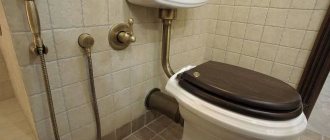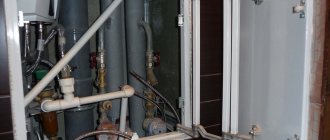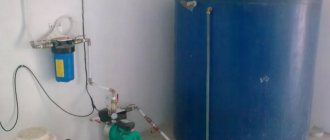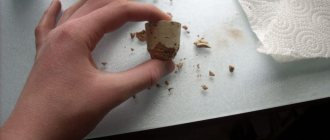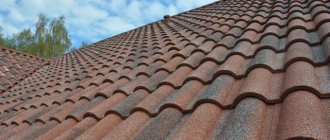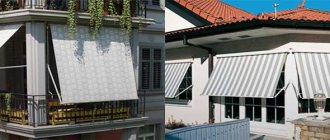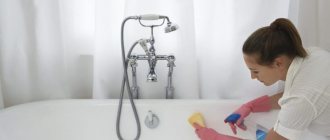Liquid acrylic of the following brands is well suited for bathroom restoration: Stakryl, Plastol, Ekovanna. There are also other manufacturers whose products are less popular. The final quality of the plumbing coating depends more on the work of the craftsman than on the type of material. The type of mixture affects only the method of its application and does not in any way affect the result obtained.
Restoration of a bathtub with liquid acrylic Source stroy-podskazka.ru
In the traditional idea of an ideal interior, plumbing fixtures should be white and have a smooth glossy surface. This look is associated with the cleanliness and neatness that reigns in the bathroom. When purchasing a new bathtub, we admire its snow-white beauty for a long time, but over time, even the highest quality products lose their smoothness and shine. During operation, small cracks, stains and other defects inevitably appear that spoil the impression of the device. To return your bathroom to its former luxurious look, you can use modern materials.
The simplest and most cost-effective solution is self-leveling acrylic, which allows you to both repair damage and completely renew the surface of your plumbing fixtures. There are many products in this category on sale, so it can be difficult for the user to decide on the appropriate option. To help with choosing a product, in this article we tried to figure out which acrylic is best for bathtub restoration and how to use it correctly.
Acrylic coating Source sdelaysam-svoimirukami.ru
What is acrylic mixture
The technology for resurfacing plumbing fixtures appeared about 20 years ago. For this, liquid acrylic is used, which is applied to the plumbing fixtures and left for some time to harden. The result is a shiny and smooth coating that is highly durable and resistant to damage. This product can be used for both steel and plastic bathtubs. You can also coat cast iron products with acrylic. The surface layer has a long service life and perfectly hides minor defects.
Applying acrylic to a bathtub Source vitrum-novo.ru
The following brands are represented in Russia:
Rice. 1. Popular brands of acrylic
Rice. 2. Little-known brands
Rice. 3. Foreign self-leveling acrylic
Popular:
- Plastall (correctly read - plastol, incorrectly - plastal). It is produced in Togliatti by Plastol LLC under the control of the Pabrec DOO concern (Slovenia). Product line: plastol premium 24, plastol-M, plastol classic, plastol titanium, plastol super 16.
- Ecovanna. Produced in Moscow by Ekovanna LLC. Product line: liquid acrylic Lux, antimicrobial acrylic with silver ions, black acrylic Shungite.
- YarLi. Yaroslavl plant of paints and varnishes, Yaroslavl. Products: self-leveling acrylic YarliSoat 616.
- Glasscryl. Manufacturer LLC Ekolor, St. Petersburg. Product line: Stakryl, Stakryl Profi.
Little known:
- Plastvanna
- Ecoacrylic
- Finacryl
Foreign:
- Ecopel is produced by the same concern Pabrec DOO, which controls the production of plastol in Russia. It is used for the restoration of bathtubs using the pouring method in the European Union and the USA.
Fakes
You can read more about fakes of liquid acrylic here.
If you want to learn even more, read the most detailed review of liquid acrylics for bathtub restoration on the Internet.
Advantages and disadvantages
Self-leveling acrylic has many positive characteristics:
- The surface retains its temperature for a long time;
- There is no slipping;
- The coating is pleasant to touch;
- It is possible to color the mixture before application;
- The acrylic layer lasts a long time and resists wear well;
- The surface is resistant to constant loads;
- Whiteness lasts for a long time, it is easy to maintain the shade;
- Easy product care;
- Safety for health and the environment;
- Possibility of using chemicals;
- Long-term preservation of initial characteristics;
- Protects plumbing fixtures from the proliferation of pathogenic microorganisms and also prevents the formation of fungus;
- Possibility to repeat application of acrylic depending on need.
Bath before and after restoration Source beristroy.ru
In addition to its advantages, the product also has some disadvantages:
- It takes a long time to dry, this process can occur over several days;
- The likelihood of dust and debris sticking, which can affect the final result;
- Do not use aggressive chemicals or abrasive substances to care for the surface.
Restoring the bathtub cover Source gidpokraske.ru
Comparison
We decided to analyze information on the three most popular types of liquid acrylic and answer several questions at once, which is better:
- stakryl or liquid acrylic luxury?
- stakryl or plastol?
- plastol or ecovanna?
To do this, we will analyze consumer reviews and our own practical experience.
What people say:
the ratio of the number of negative reviews to the total number of reviews containing an indication of the acrylic brand.
According to information from the review site irrecomended.ru stakryl – 24% plastol – 18% Ecovanna – 11%
According to reviews on the website otzovik.ru eco-woven – 19% plastol – 4% stakryl – 12%
Taking into account the statistics of these sites, it is worth making allowances for the fact that (according to research by the international marketing company Nielsen) people are more willing to write negative reviews, and if everything is in order, they remain silent. It is worth understanding that negative reviews in this case are caused not by the properties of the material, but by the work of the master - that is, the final result, which does not depend on the characteristics of acrylic. This may well mean that an unscrupulous company is working with good material. Therefore, below we present our own practical data.
What practice shows:
To obtain more reliable statistics, we counted the number of justified warranty claims over 8 years of work that were not related to the technician’s errors (sample of 20,254 clients*).
Number of warranty claims:
- stacryl – 0.7%
- plastol – 0.3%
- ecovanna – 0.5%
*The data given is subjective and is not a reliable basis for determining the quality of the material.
Types and manufacturers
There are a large number of products on the market that differ in their properties and composition. Manufacturers include various ingredients in their products that affect the color of the coating and its method of application. Typically, an acrylic mixture consists of a base and a hardener, which are mixed before use. The instructions also indicate exactly how to prepare the solution, as well as how to apply it to the plumbing.
Acrylic bathtub surface Source stroy-podskazka.ru
The following types of acrylic are most widespread among users:
- Glasscryl. This is the very first product created to restore the surface of bathtubs and other plumbing fixtures. It has a heterogeneous consistency and a special structure that does not respond well to the use of solvents. The mixture comes in a white shade, but it is possible to add another color in the form of a special tint. This type of acrylic is very reliable, it can withstand significant loads without damage. The service life of the surface is several years. Among the disadvantages of the product are not very convenient application, as well as long drying and unpleasant odors during operation.
Acrylic mixture Stacryl Source stacril.com.ua
Preparing plumbing for restoration
To ensure the most predictable result, the bathtub is specially prepared for restoration work. To do this, you need to complete the following steps:
- Prepare the necessary materials. You will need to find sandpaper, a brush, a cleaning agent such as baking soda, and a putty knife with gloves.
- The drain hole and overflow are cleaned and the linings are removed from them.
- Plumbing equipment is treated with sandpaper and thoroughly degreased.
- All damage is well puttied.
- Repeated cleaning and washing.
Before applying acrylic, the bath is heated with hot water for several minutes. After this, the liquid should be removed and the surface to be treated should be thoroughly dried with a hairdryer.
How to apply liquid acrylic to a bathtub
The method of application depends on the composition of the mixture; it may differ for each manufacturer. To avoid mistakes, always carefully read the instructions before use. General rules imply this coating method:
- Preparation of the mixture. The material should be slightly warm for quick reconstitution. The base is poured into the container, and then the hardener is added to it. The resulting mixture must be thoroughly stirred for 10 minutes until the consistency becomes completely homogeneous. This process must be performed very carefully, without splashing the liquid around. It is best to use a regular stick for this purpose. Then the mixture should sit for several minutes. Don't leave it for long as it will harden completely within an hour.
- If desired, you can add color to obtain the desired coating color. It is advisable to use a product from the same manufacturer as the mixture itself. This will ensure perfect compatibility when mixed. Otherwise, delamination of the material may begin, which will become unsuitable for use.
- Cleaning and preparing plumbing fixtures. The surface must be thoroughly dried, and a container must be placed under the drain to drain the material. The tiles and flooring should be well protected from the solution.
- Application of material. The mixture begins to cover the surface from the edges, evenly pouring over the walls of the bath. Once the acrylic gets into the middle part of the plumbing, the process is repeated with the next layer.
- After application, the device must be left to allow the material to harden. The room is closed and people try not to visit it to prevent the penetration of dust and small debris. Even an accidentally falling hair can ruin the entire work, so it is necessary to provide protection to the applied layer.
- When polymerization is complete, all that remains is to remove excess material near the drain hole and secure the strapping.
It is important to remember that after application you should not touch the surface, try to reapply the product or correct flaws. Otherwise, the coating may become uneven and the work will be ruined.
Application technology
When choosing a product for restoring a bowl, people often wonder: painting the bathtub with acrylic or enamel, which is better and easier for use at home. Each material has different application rules and tools. Let's look at the features of application technologies.
Working with acrylic
You can restore the bowl with polymer material yourself. During work, be sure to use a respirator and mask, and open the windows in your home for ventilation. To avoid poisoning from toxic fumes, professionals recommend leaving the premises without residents or pets for a day.
All things are taken out of the bathroom, leaving the bathtub and toilet. It is better to cover furniture and household appliances with polyethylene, and tiles with masking tape. Old enamel in the bowl is removed with sandpaper or a grinding machine. The roughness of the walls will ensure good adhesion and prevent delamination of the material. The debris is removed with a vacuum cleaner, washed with warm water and, after drying, degreased with acetone. The siphons are unscrewed and reservoirs are placed under the holes.
First stage of restoration Source master4-100.ucoz.ru
Correctly applied coating will last at least 15 years. It is more convenient to work with liquid acrylic at a room temperature of 21-26 C. Before the procedure, add hot water to the bathtub, drain it after 30 minutes and thoroughly wipe the walls.
Liquid acrylic is prepared before use. The hardener is added to the container with the substance according to the instructions and stirred carefully. If the connection is poor, areas will appear on the surface that do not harden. The stains will begin to peel off, so restoration will have to be done again.
Liquid acrylic is applied to the surface by pouring at home. For convenience, the composition is poured into a small container. The resulting solution is poured in a thin stream along the side of the bathtub, gradually moving along the perimeter of the plumbing. The width of the strip should be 5 cm. The thickness of the product is such that the mass slowly flows off the surface, leaving no streaks or bubbles.
Filling plumbing fixtures with liquid composition Source static.tildacdn.com

